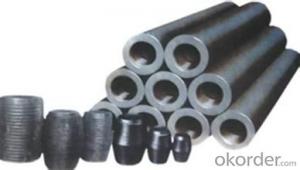When we talk about innovation, the first thing that comes to mind is usually something flashy and futuristic. But sometimes, innovation is found in the simplest of places, like the humble graphite electrode. Yes, you heard that right! The unassuming graphite electrode that has been around for ages is now getting a 3D printed makeover, and it’s changing the game.
Let’s dive into the world of 3D printed graphite electrodes and see how this innovation is making waves in various industries.
First things first, what exactly are graphite electrodes? Well, they are essentially conductive materials used in various applications, such as batteries, fuel cells, and even in the medical field for things like pacemakers. They are made from graphite, which is a form of carbon that has excellent electrical conductivity.
Now, you might be wondering, what’s so special about 3D printing these electrodes? The answer is simple: customization. With 3D printing, we can create electrodes of virtually any shape and size, tailored to the specific needs of the application. This level of customization is something that traditional manufacturing methods simply cannot offer.
Imagine being able to design an electrode that fits perfectly into the space available in a battery or a fuel cell, maximizing efficiency and performance. Or how about creating a pacemaker electrode that is specifically shaped to minimize irritation and promote better integration with the body? The possibilities are endless!
But it’s not just about the shape and size. 3D printed graphite electrodes also offer improved performance in terms of electrical conductivity and durability. This is because the 3D printing process allows for a more precise control over the structure and composition of the electrode, resulting in a more uniform and consistent material.
One of the industries that stand to benefit the most from this innovation is the automotive industry. Electric vehicles are becoming increasingly popular, and with that comes the need for more efficient and powerful batteries. 3D printed graphite electrodes can help meet this demand by providing a more efficient energy storage solution.
In fact, researchers have already started experimenting with 3D printed graphite electrodes in lithium-sulfur batteries, which are considered to be the next generation of energy storage technology. These batteries have the potential to offer higher energy density and longer lifespan compared to current lithium-ion batteries. By incorporating 3D printed electrodes, researchers believe they can further enhance the performance and reliability of these batteries.
Another area where 3D printed graphite electrodes are making a difference is in the medical field. As I mentioned earlier, they can be used in pacemakers to improve patient comfort and device longevity. But that’s not all. They are also being explored for use in other medical devices, such as neural stimulators and drug delivery systems, where precision and customization are key.
The environmental impact of this innovation should not be overlooked either. By using 3D printing to create graphite electrodes, we can potentially reduce waste and energy consumption during the manufacturing process. This is because 3D printing allows for more efficient use of materials and less energy-intensive production methods compared to traditional manufacturing.
So, what does the future hold for 3D printed graphite electrodes? As with any emerging technology, there are challenges to overcome, such as scaling up production and ensuring the quality and safety of the final product. However, the potential benefits are immense, and the possibilities for innovation are endless.
In conclusion, 3D printed graphite electrodes are a prime example of how innovation can happen in the most unexpected places. By embracing this technology, we can unlock new possibilities in various industries, from automotive to medical, and even beyond. So, the next time you think about innovation, don’t forget about the humble graphite electrode that’s getting a high-tech upgrade!

